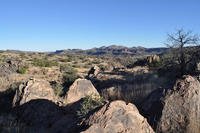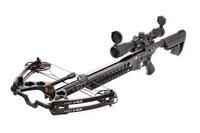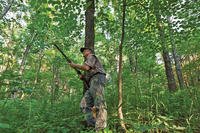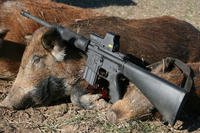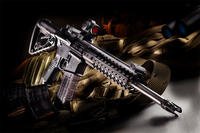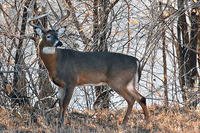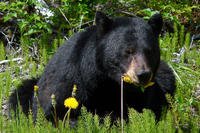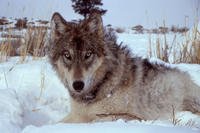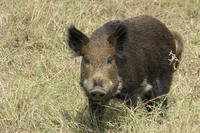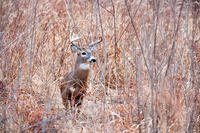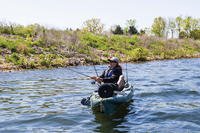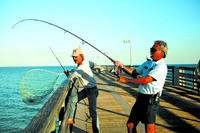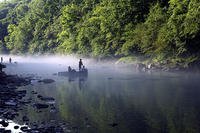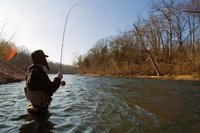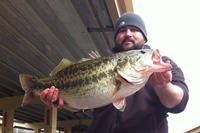Texas may be best known for its world-class whitetail hunting, but its wild hog, javelina, and exotic hunting make it unique in that you can hunt a wide variety of game year-round. Here, Bob Connell shares two exciting Texas hunts where his AR proved to be Texas perfect on blackbuck and javelina.
The Blackbuck
Most folks associate exotic-animal hunting in Texas with high fences that keep animals confined. That is no longer the case. I hunt blackbuck on a working sheep and cattle ranch with low fences. The size of the blackbuck herd changes all the time as animals are free to come and go on the ranch. The most effective way to hunt blackbucks is spot and stalk. We drive the scendaros (clear cut lanes) until we spot a good buck, often just a flash of black or white. Then you quietly move downwind, being careful that he (or a doe in his harem) doesn't spot you. Blackbucks are keen-eyed antelope, with vision and speed similar to our North American pronghorn. The distance you can comfortably and accurately shoot from will determine how close you need to be. Practice from field positions, sitting, prone, and with shooting sticks, not from a bench. Most blackbucks are taken from 100 to 300 yards.
I prefer an AR-15 chambered in .223 Remington shooting Sierra 65-grain soft-point boat tail bullets. Blackbucks aren't large animals. They're smaller than our North American pronghorn antelope. A large male stands about 30 inches at the shoulder and weighs up to 80 to 90 pounds. Does weigh from 55 to 60 pounds. Most hunters who miss their first shot, misjudged the animal's size and shot high.
Blackbucks don't stand still for very long and combined with their good eyesight you'll need to be ready to shoot quickly, without rushing the shot. Free-ranging blackbucks are very alert and are one of the fastest land animals in the world, reaching speeds of 65 m.p.h. Once they spot you, all you'll see is a flash of black and white.
The Hunt
I arrived at the bump gate right at first light, pulled up next to the corral, grabbed my binoculars and got my AR-15 and shooting sticks ready. It was 42 degrees and clear, perfect weather for hunting blackbuck. I headed down the main two-track and almost immediately spotted three bucks and eight does. One of the bucks looked like a shooter, so I eased out of the truck and started my stalk. When I got within 200 yards and glassed again I could see that it was a "sunset shooter," not a trophy, so I passed and tried to find a bigger buck.
Watching the wind, I drove around to the south end of the ranch and soon spotted a nice buck with six does. I eased the truck into the bush and began my stalk. I was able to keep some cover between the blackbucks and me and made it to within 100 yards. I got on my knees and crawled slowly around a bush. The buck was facing away from me as I kneeled on one knee and set the AR on the shooting sticks. After about two minutes, he started to quarter away from me, and was just about to enter some heavy brush when I took the shot. He jumped straight up in the air, ran 10 yards, and piled up.
Stalking free-ranging blackbuck antelope in central Texas is one of the most exciting and challenging hunts you can do in the Lone Star state. Their long spiral horns and unique black and white coloration make them one of the most beautiful and prized of all the antelope in the world. Since their introduction in Kerr County in 1932, the Indian blackbuck antelope has thrived in the Edwards Plateau region of Texas. It is estimated that our herd is now over 20,000 animals. While there are many blackbucks hunted on game ranches behind high-fences, there is also a large free-ranging population as well. Free-ranging blackbucks are one of the most difficult animals to hunt in Texas. If you ever get a chance to hunt them, do it. It is a hunt you will remember fondly for the rest of your life, and, they taste great!
The load:
.223 remington
65-grain Sierra #1395 SBT Game King Bullet
25.5 grains Ramshot TAC
Remington 71⁄2 Small Rifle Bench Rest Primers
Winchester Brass
Velocity: 2,900 fps
No Crimp
Javelina
Hunting during the summer in west Texas with temperatures over 100 degrees is considered by many to be insane. They're probably correct. But, with deer season months away, a few of us decided to meet up at a ranch near Ft. Stockton, Texas for a summer javelina hunt with our ARs.
We converged on the ranch Friday afternoon, settled in the bunkhouse, set up the "shade canopies" and chairs, and started reaching for cold bottles of water. We discussed hunt strategy with the ranch owner and discovered we would be doing a bit of everything: stalking senderos and two-tracks, setting up on hillsides overlooking draws, and hunting from blinds. Our battery consisted of an assortment of AR-15's chambered in .223 and 6.5 Grendel.
The AR-15 is the perfect rifle for javelinas. I prefer the .223 using 65-grain soft points. Javelinas are not much larger than a coyote. They weigh from 30 to 60 pounds, so 65-grain bullets do a fine job of getting them on the ground.
Javelinas, or Collared Peccaries, are found throughout the southwestern United States and down into Central and northern South America. Although they resemble pigs, they are not in the pig family. They are distantly related to both pigs and hippopotamuses, but are classified in their own family: Tayassuidae. They have poor eyesight, but excellent senses of smell and hearing. This makes them good candidates for spot and stalk hunting. They are most active in the early morning and late afternoon and travel in herds ranging from six up to as many as 100. They'll usually come out of their bedding areas right after sunrise and again just before sundown to feed along ranch roads and two-tracks. If you approach from downwind, it's fairly easy to stalk close enough to the herd to get a good shot.
In this part of Texas you can take two javelina annually. With an AR, you have a good chance of getting two on the same stalk. If the rest of the herd scatters too quickly after the first shot, then just sit tight. They usually return within 20 minutes after things settle down. Just find some cover and be patient. Clay, ranch manager and good friend, told me that he was going to let two of his guides go with me. They had both been seeing javelinas on different parts of the ranch in the past week. I headed out with Joshua and Joseph before first light. We drove down a two-track about a mile and a half from the lodge to where they had been spotting javelinas, then parked and headed up the road on foot. As we rounded the bend we could smell javelinas. They have such a strong and distinct odor that they are frequently called "skunk hogs" or "stink pigs." We spotted a lone boar off to the side of the road.
Using brush for cover, I was able to get to an opening where I could get a clear shot. I put the crosshairs on, squeezed the trigger, and bang - flop - the 65-grain bullet did its job perfectly. We headed to another part of the ranch where the javelinas had been active. Driving down the two-track we spotted another lone boar. With the wind in my favor, I was able to stalk up close and again the 65-grain bullet did the job! He ran no more than 10 yards before piling up. We loaded the second javelina into the truck and headed back to the skinning shed.
The first javelina weighed 45 pounds and the second one 37 pounds. These were my first javelinas with my AR-15 and the first with the 65-grain soft-point bullet. The load worked so well, I loaded a box of 50 of them for hunting just as soon as I got back home. Put javelina on your "To-Do" list and don't leave the AR at home!
The load:
.223 remington
65-grain Sierra #1395 SBT Game King Bullet
25.5 grains Ramshot TAC
Remington 71⁄2 Small Rifle Bench Rest Primers
Winchester Brass
Velocity: 2,900 fps
No Crimp
